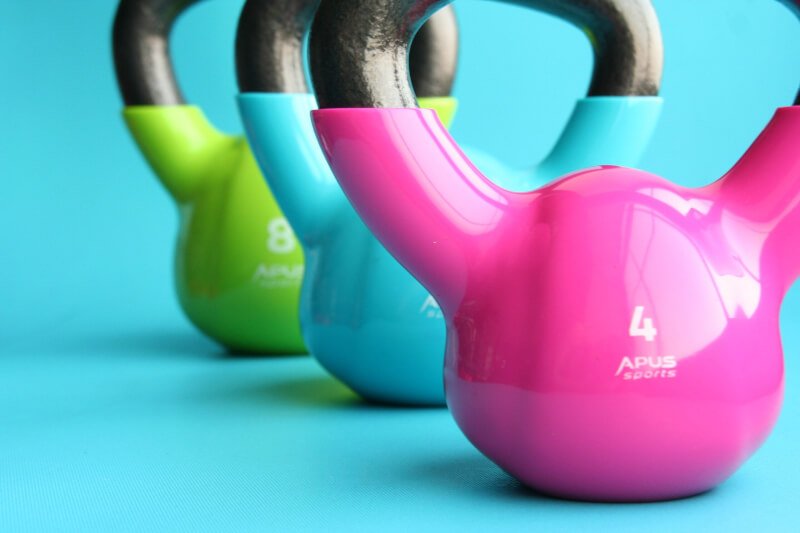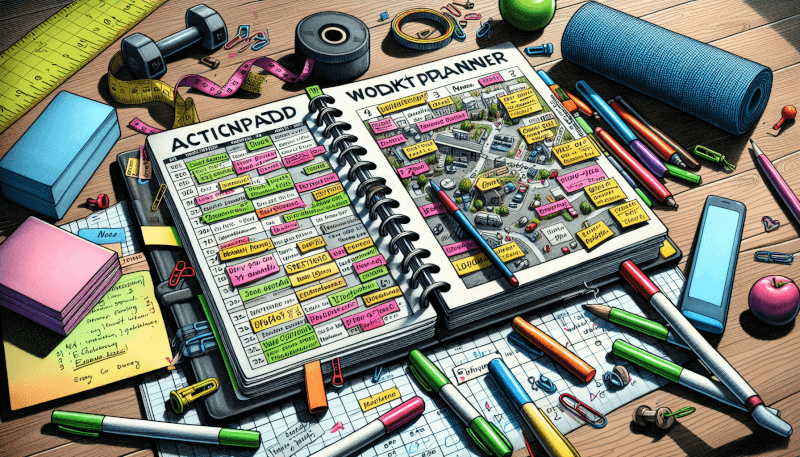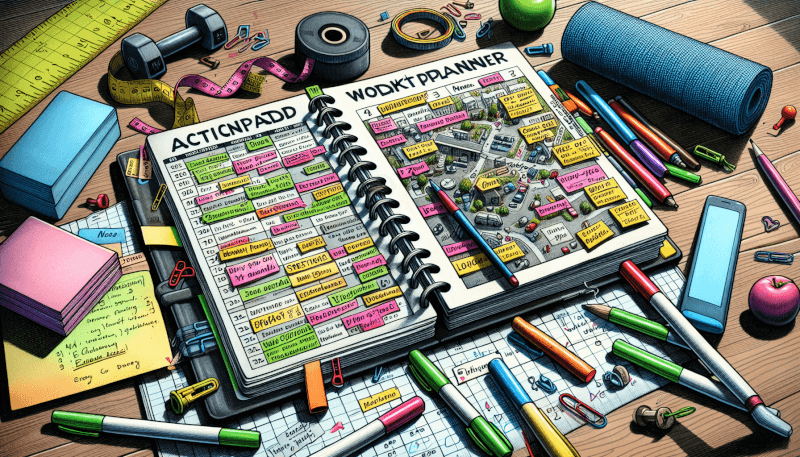Are you struggling to find time for exercise amidst your busy schedule? Look no further – we have the perfect solution for you! Our article, “Custom Workout Plans For Busy People,” offers a comprehensive guide on how to incorporate fitness into your hectic routine. Discover the benefits of personalized workout plans tailored specifically to your needs, designed to maximize results in minimum time. Say goodbye to endless hours at the gym and hello to efficient workouts that fit seamlessly into your busy life. It’s time to prioritize your health and achieve your fitness goals, no matter how jam-packed your schedule may be.

A. Benefits of Custom Workout Plans
1. Efficient use of time
When you’re juggling a busy schedule, time is precious. That’s where custom workout plans come in. By tailoring your workouts specifically to your goals and available time, you can make the most efficient use of the time you have for exercise. Instead of spending hours at the gym, a custom plan helps you focus on exercises that deliver maximum results in shorter sessions.
2. Personalized approach
One of the biggest advantages of custom workout plans is that they are personalized to fit your unique needs and preferences. A plan designed specifically for you takes into account your fitness level, any physical limitations, and your desired goals. This personalization ensures that you are more likely to stick to your plan and enjoy the journey towards a healthier lifestyle.
3. Accommodates busy schedule
Busy people often struggle to find time for exercise amidst their packed schedule. Custom workout plans can be designed to accommodate your busy lifestyle. Whether you have limited time in the morning, during lunch breaks, or in the evenings, a customized plan can help you make the best use of the time you have available.
4. Maximizes results
By designing a workout plan specifically tailored to your goals and needs, you can maximize your results. Custom plans focus on exercises that align with your objectives, whether it’s weight loss, muscle gain, or overall fitness. By targeting the areas you want to work on and implementing the right exercises, you can achieve better and faster results.
B. Getting Started with Custom Workout Plans
1. Define your goals
Before diving into any workout plan, it’s crucial to define your goals. What do you want to achieve with your fitness routine? Is it weight loss, muscle building, or general well-being? Defining your goals provides clarity and allows you to create a plan that is specific to your needs.
2. Assess your fitness level
Knowing your current fitness level is essential in order to develop a custom workout plan that challenges you appropriately. Consider factors such as strength, endurance, flexibility, and cardiorespiratory fitness. This self-assessment will help you select the right exercises and set realistic goals that you can work towards.
3. Determine available time
Be honest with yourself about how much time you can realistically dedicate to your workouts. Assess your daily and weekly schedule to identify pockets of time that can be dedicated to exercise. Whether it’s 20 minutes or an hour, understanding your time constraints will help you design a plan that you can stick to.
4. Consult a professional
To ensure that your custom workout plan aligns with your goals and capabilities, it’s beneficial to consult with a fitness professional. They can assess your specific needs and provide expert guidance in creating an effective and safe plan. A professional will take into account any physical limitations or health concerns you may have, ensuring your plan is tailored to your unique circumstances.

C. Designing a Custom Workout Plan
1. Choose the right exercises
Once you’ve defined your goals and consulted with a fitness professional, it’s time to choose the right exercises for your plan. Select exercises that target the muscle groups you want to work on and are appropriate for your fitness level. Incorporating a mix of cardiovascular exercises, such as running or cycling, and strength training exercises, such as weightlifting or bodyweight exercises, will help you achieve a well-rounded workout.
2. Allocate time for each exercise
With limited time available, it’s important to allocate the right amount of time for each exercise. Consider the intensity and duration of each exercise and ensure they fit within the time frame you have. Remember, the key is to be efficient with your workout, focusing on exercises that deliver the most impact in a shorter amount of time.
3. Incorporate cardio and strength training
A balanced workout plan should include both cardiovascular exercises and strength training. Cardio exercises help improve endurance and burn calories, while strength training exercises build and tone muscles. Finding the right balance between the two will depend on your goals and fitness level. Aim for a combination of aerobic activities, such as jogging or swimming, and strength exercises targeting major muscle groups.
4. Include rest and recovery days
Rest and recovery are essential components of any workout plan. After intense exercise, your muscles need time to repair and rebuild. Incorporate rest days into your plan to allow your body time to recover. Additionally, prioritize sleep to optimize your body’s recovery process. Adequate rest and recovery will help prevent injuries and improve your overall performance.
D. Tips for Squeezing in Workouts throughout the Day
1. Split your workout into shorter sessions
If finding a solid block of time for exercise is challenging, consider splitting your workout into shorter sessions. You can break a 30-minute workout into three 10-minute segments throughout the day. This allows you to fit in physical activity even during busy periods, such as during work breaks or while waiting for a meeting to start.
2. Incorporate exercise into daily activities
Look for opportunities to incorporate exercise into your daily activities. Take the stairs instead of the elevator, walk or bike to work if possible, or do bodyweight exercises while watching TV. By integrating exercise into your daily routine, you can make it a seamless part of your lifestyle.
3. Prioritize physical activity during breaks
When you have short breaks throughout the day, use that time to engage in physical activity. Whether it’s going for a brisk walk around the block or doing a few minutes of stretching, prioritize movement during these breaks. Not only will it contribute to your overall fitness goals, but it can also help clear your mind and boost productivity.
4. Make use of technology
In today’s digital age, there are numerous fitness apps and devices available to help you track your workouts and stay motivated. Consider using apps that offer quick workouts or reminders to move throughout the day. Wearable devices such as fitness trackers can help monitor your daily activity levels and provide important metrics to evaluate your progress.

E. Creating a Consistent Routine
1. Set a schedule and stick to it
Consistency is key when it comes to achieving your fitness goals. Set a schedule for your workouts and commit to sticking to it. Treat your exercise time as non-negotiable, just like any other important appointment or meeting. By establishing a routine, you’ll find it easier to stay motivated and make exercise a part of your daily life.
2. Find accountability partners
Having someone or a group of people to hold you accountable can greatly increase your chances of sticking to your custom workout plan. Find a workout buddy or join a fitness class to provide external motivation and encouragement. Knowing that someone is counting on you to show up can make it harder to skip a workout.
3. Make adjustments when necessary
While consistency is important, it’s also necessary to be flexible and make adjustments when necessary. Life is unpredictable, and there may be times when your schedule doesn’t allow for your regular workout. In such cases, find alternative ways to stay active, such as taking a quick walk during your lunch break or doing a short bodyweight workout at home. Being adaptable will help you maintain momentum even when faced with challenges.
4. Track progress
Tracking your progress is crucial to stay motivated and evaluate the effectiveness of your custom workout plan. Keep a workout journal to record your exercises, sets, reps, and any personal records. This will help you see how far you’ve come and identify areas for improvement. Additionally, regularly reassess your goals to ensure they are still aligned with your aspirations and make adjustments accordingly.
F. Overcoming Common Challenges
1. Lack of motivation
Staying motivated can be challenging, especially when life gets busy. To overcome this hurdle, try finding activities that you enjoy and make you feel good. Whether it’s dancing, swimming, or playing a sport, find something that excites you and keeps you engaged. Additionally, vary your workouts to keep things interesting and prevent boredom. Lastly, remind yourself of the benefits of exercise, such as increased energy and improved mood, to stay motivated.
2. Limited access to equipment
Not having access to a fully-equipped gym doesn’t mean you can’t have an effective workout plan. There are numerous exercises that can be done with minimal or no equipment. Bodyweight exercises, such as push-ups, squats, and planks, can help strengthen and tone your muscles. Additionally, resistance bands or dumbbells can be easily incorporated into your routine for added challenge.
3. Time management struggles
One of the biggest challenges for busy individuals is managing time effectively. To combat this, prioritize your workouts as a non-negotiable part of your day. Consider waking up earlier to fit in a morning workout or schedule your exercise during lunch breaks. Additionally, try to minimize time spent on unproductive activities, such as scrolling through social media, and use that time for physical activity instead.
4. Plateau in progress
It’s common to experience a plateau in progress when following a workout plan for an extended period. To overcome this, switch up your routine and introduce new exercises or training methods. By challenging your body in new ways, you can break through plateaus and continue progressing towards your goals. Additionally, make sure you’re fueling your body with a balanced diet to support your workouts and promote muscle growth.

G. Custom Workout Plans for Different Lifestyles
1. Busy professionals
For busy professionals, time is often limited. Custom workout plans for this lifestyle may involve shorter, high-intensity workouts that can be done at home or the office. Utilizing interval training and compound exercises can help maximize results in a shorter amount of time. Additionally, finding quick and convenient exercise options, such as online classes or workout apps, can be beneficial.
2. Busy parents
Parents often have demanding schedules, making it challenging to prioritize self-care. Custom workout plans for busy parents may incorporate activities that can be done with their children, such as family hikes or bike rides. Additionally, finding workout options that can be done at home while the children are napping or playing nearby can be a practical solution.
3. Traveling individuals
Frequent travelers often struggle to maintain a consistent exercise routine. Custom workout plans for traveling individuals can involve bodyweight exercises that can be done in hotel rooms or incorporate activities specific to the travel destination, such as hiking or swimming. Planning ahead and packing resistance bands or a jump rope can also provide portable workout options.
4. Shift workers
Shift workers face unique challenges when it comes to maintaining a workout routine. Custom plans for shift workers may involve flexibility with workout times due to varying work schedules. Incorporating short bursts of exercise during breaks or implementing a structured sleep schedule to allow for consistent rest and recovery can also be beneficial.
H. Incorporating Self-Care into your Custom Workout Plan
1. Prioritize sleep and rest
While exercise is important, so is rest and recovery. Make sleep a priority by aiming for a consistent sleep schedule and ensuring you get enough hours of quality sleep each night. Adequate rest helps your body recover and repair, allowing you to perform better in your workouts and prevent fatigue.
2. Practice stress-management techniques
Exercise is a great stress reliever, but it’s also important to incorporate other stress-management techniques into your routine. Explore activities such as meditation, yoga, or deep breathing exercises to help manage stress levels. Taking time for self-care can enhance your overall well-being and make your workout plan more holistic.
3. Listen to your body
While pushing yourself during workouts can be beneficial, it’s equally important to listen to your body and understand its limitations. Pay attention to any signs of pain or fatigue and modify your workouts accordingly. It’s better to take a break or modify an exercise than to risk injury. Remember, your custom workout plan should be designed to support your body, not cause harm.
4. Include recovery activities
In addition to rest days, incorporating recovery activities into your routine can improve your overall fitness and prevent burnout. Examples of recovery activities include yoga, foam rolling, or stretching exercises. These activities promote flexibility, improve muscle recovery, and enhance overall performance.

I. The Importance of Flexibility and Adaptability
1. Be flexible with your routine
Life is unpredictable, and things don’t always go according to plan. Being flexible with your workout routine is essential to accommodate unexpected events or changes in your schedule. Instead of skipping workouts altogether, be willing to adjust your plans and find alternative ways to stay active. Remember, any physical activity is better than none.
2. Adapt to changing circumstances
It’s important to adapt your custom workout plan as your circumstances change. For example, if you’ve achieved your initial goals, consider challenging yourself with new exercises or increasing the intensity of your workouts. Additionally, if you experience any physical limitations or injuries, be open to modifying your plan to accommodate your body’s needs.
3. Embrace alternative workout options
Sometimes, circumstances may prevent you from following your planned workout. Embrace alternative workout options, such as online classes, home workouts, or outdoor activities, to ensure you stay active regardless of the situation. Having a repertoire of backup options will allow you to continue progressing towards your goals, even when faced with unexpected challenges.
4. Modify as needed
As you progress in your fitness journey, it’s important to periodically evaluate your custom workout plan and make necessary modifications. This may involve adjusting your goals, increasing the intensity of your workouts, or introducing new exercises to keep your routine fresh and challenging. Seek professional guidance if needed to ensure you are making effective and safe modifications.
J. Tracking and Evaluating your Custom Workout Plan
1. Keep a workout journal
Tracking your workouts in a journal can provide valuable insights into your progress over time. Record the exercises, sets, reps, and any notes about your performance or how you felt during each workout. This information will help you identify patterns, track improvements, and make informed decisions about adjusting your plan.
2. Use fitness apps and devices
In today’s technology-driven world, there are countless fitness apps and devices available to help you track and evaluate your custom workout plan. From step counters to heart rate monitors, these tools can provide important data about your workouts, such as calories burned and distance covered. Utilize these resources to gain a deeper understanding of your progress and make informed adjustments to your plan.
3. Regularly reassess your goals
As you work towards your goals, it’s essential to regularly reassess and evaluate them. Are they still aligned with your desires and aspirations? Are they realistic? Take the time to reflect on your progress and make any necessary adjustments to your goals. By regularly reassessing, you can stay motivated and ensure your custom workout plan remains in line with what you want to achieve.
4. Seek professional guidance if needed
If you feel uncertain about your progress or want expert guidance in evaluating your custom workout plan, don’t hesitate to seek professional help. Fitness professionals can provide valuable insights, guidance, and support throughout your fitness journey. They can help ensure that your plan continues to challenge you effectively and that you’re on track to reach your goals.


